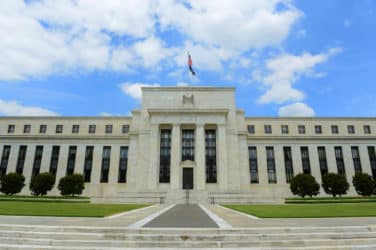Learning from Lehman – eight years on, how have we changed? (by Saker Nusseibeh, Hermes)
09.13.2016What’s changed: the financial world
We are experiencing the boldest experiment in monetary policy of modern history. Stimulus efforts from the US to China rescued financial markets and the real economy, but this emergency first-aid was never going to be the cure. In the US and Europe, growth is muted if not absent, and long-term interest rates and bond yields are being forced lower for longer. In China, underperforming state-owned enterprises urgently need reform and the authorities are grappling with excessive levels of stimulus-induced corporate debt. Risk, as restless as ever, has not been dispelled: it has simply moved from private to public balance sheets, resulting in central banks holding $13tn in assets – including plenty of negative-yielding debt.
For investors, yield is scarce and plentiful stimulus has driven stock markets to new heights, as many companies attracted shareholders by increasing dividends instead of investing or improving productivity. Quantitative easing (QE) served its purpose: it kept liquidity flowing, suppressed long-term yields and provided further relief after interest rates hit the floor. Now policy normalisation is needed, but central banks are captive to markets that panic at the prospect of higher rates. After 17 years, Japan’s QE programme is accelerating and deflation remains a constant threat: can US and European monetary authorities afford to remain dovish?
What hasn’t changed: asset managers
Crucially, major banks are still too big to fail and continue to influence the course of economies, rather than financing business and enterprise. The asset management industry continues to thrive due to the market recoveries and ability of firms to develop strategies that have benefited in the current environment. Margins have actually expanded since Lehman collapsed.
However, as in the days before the financial crisis, the industry continues to accept new so-called paradigms with few questions. For example, managers seek to launch new products that capitalise on client’s difficulties in achieving their targets because of historically low interest rates – without questioning how extensively current asset valuations have been distorted relative to history. The industry continues to have a very narrow perspective of its purpose: to provide the next does-what-it-says-on-the-tin product rather than advising clients on the broad, interconnected risks inherent in the structurally flawed markets of today.
Such narrow-mindedness was erroneous in the years running up to 2008, but banks wore most of society’s scorn. I suspect that the industry’s reluctance to change in the interests of clients will not be overlooked by society again should another crisis develop. How can the industry change?
Believe in better
The solution is simple: asset managers should strive to create a better future for investors. This means, of course, generating stronger long-term returns through investment skill and prudent risk management. But it also requires improving the society that investors will retire into, and which the next generation will inherit, by engaging with companies to mitigate environmental, social and governance risks. It means applying our understanding of markets to forge a more equitable financial system. This won’t be achieved by offering a series of single-purpose products – only by partnering with investors to capture opportunities and mitigate risks as markets change, and by using capital to create a more sustainable world, can we make a better future.
Where to find returns
It was never realistic to expect conventional outcomes from unconventional monetary policies. The industry now faces an era of low natural interest rates in which market returns from all asset classes will likely be suppressed. The coming decade will be one of the most difficult that pension funds have faced and, as ever, beneficiaries will depend on asset allocators and investment managers to make the right calls.
In an unconventional world, we believe that long-term investors need to make a radical response: commit to growth. They should reject, or at least substantially reduce, their exposures to low- or negative-yielding bonds in favour of listed and unlisted assets with strong prospects of generating positive real returns, from active equities and credit to real estate, infrastructure and private debt. Investors’ method of access will vary depending on their inherent strengths – be it skilful asset allocation or astute manager selection – but they should be driven by the same resolution: growth is the way forward.





